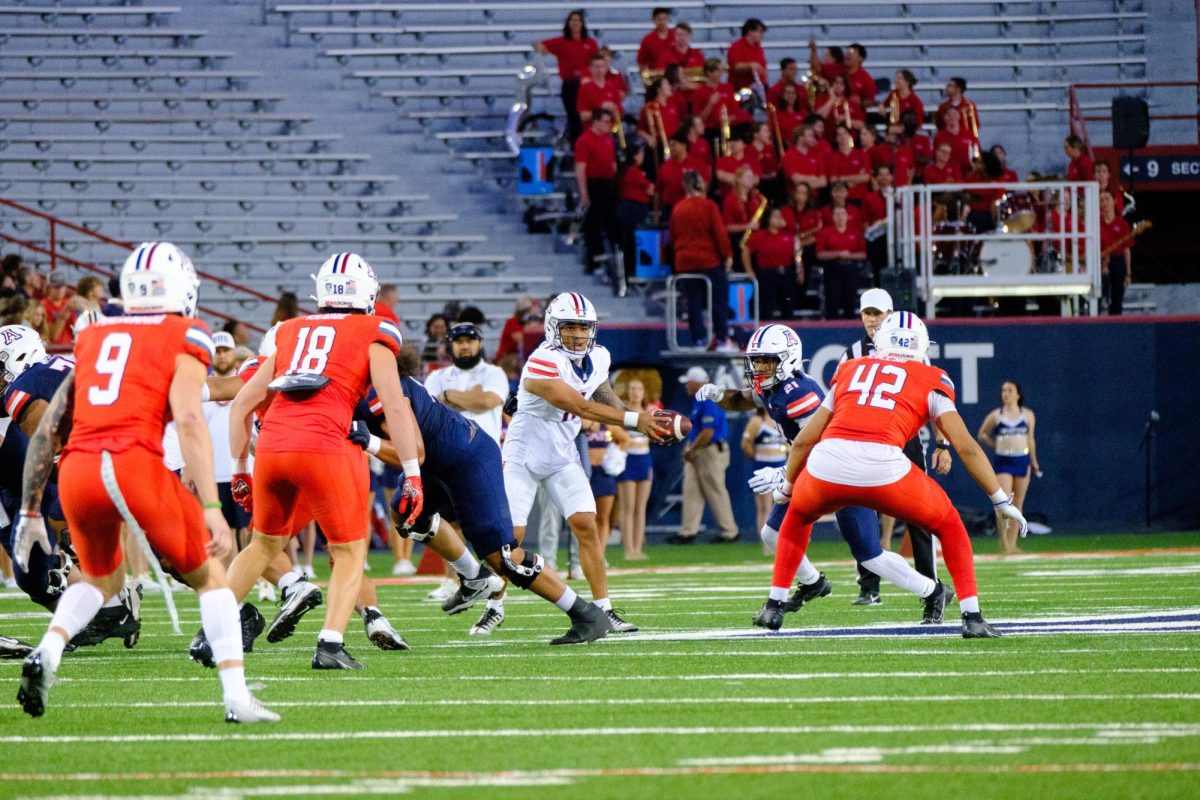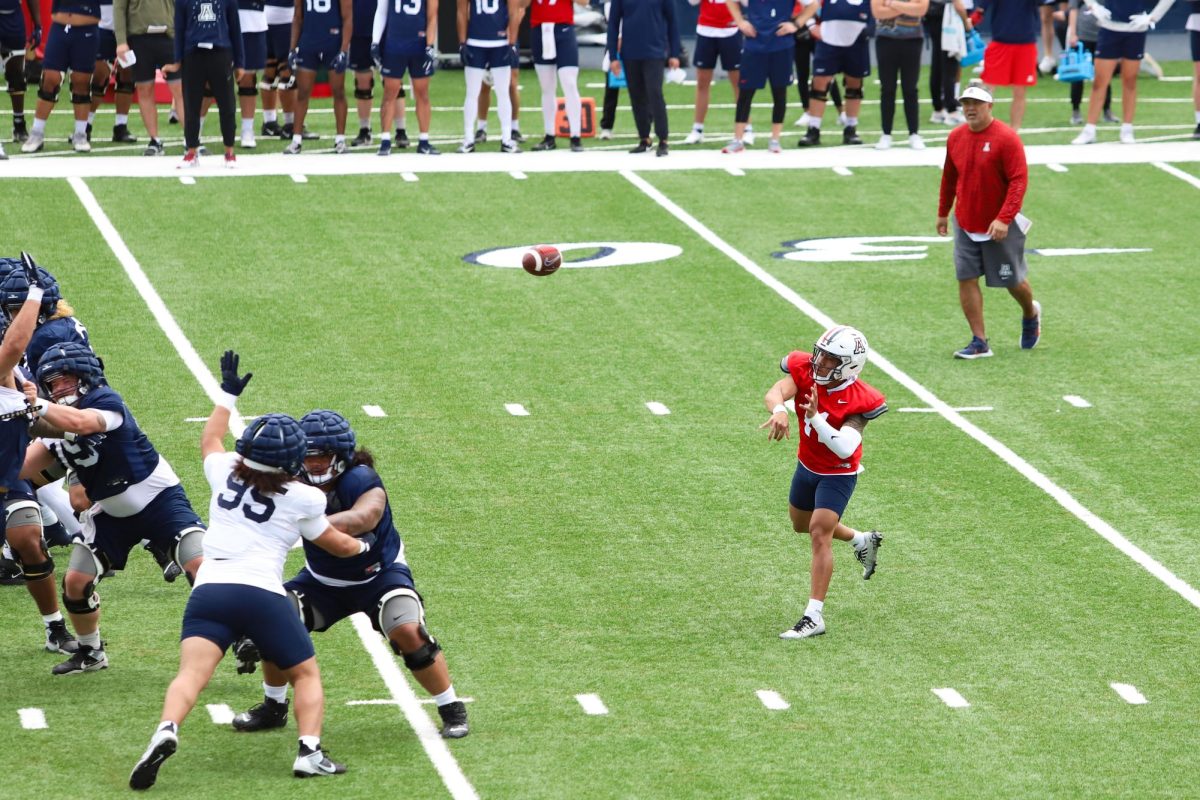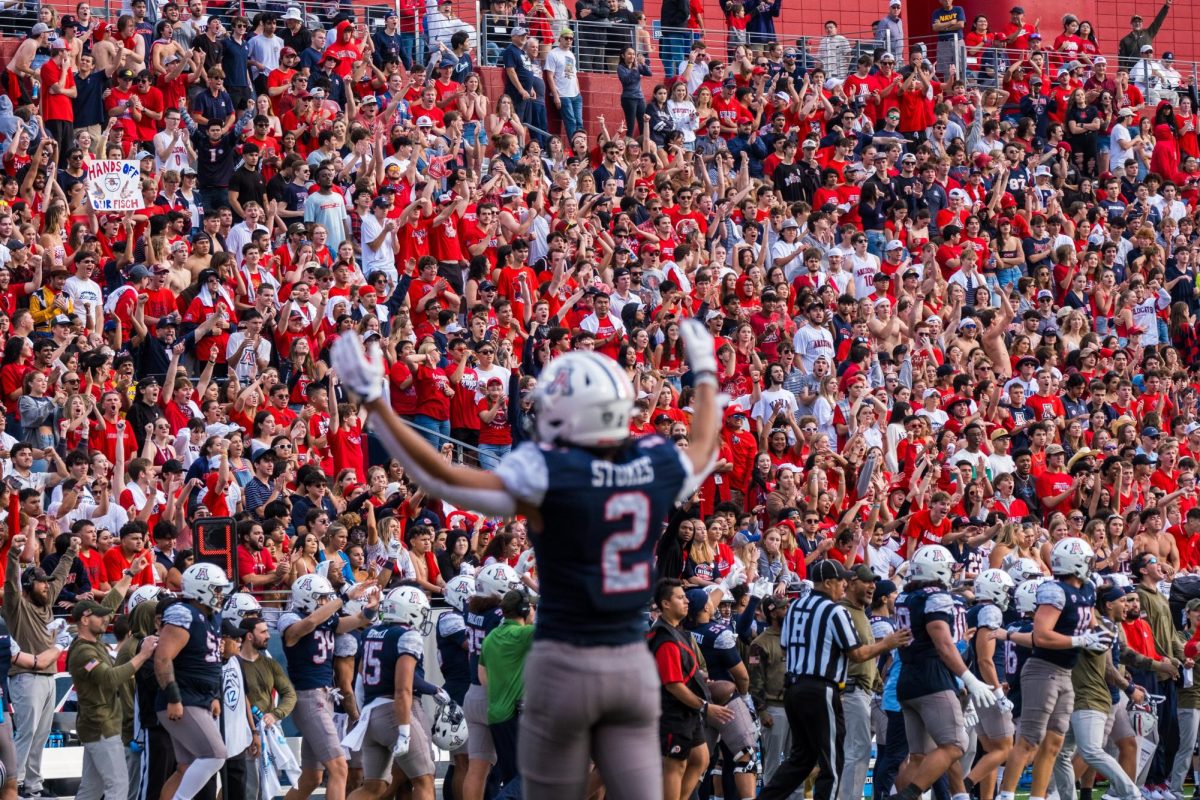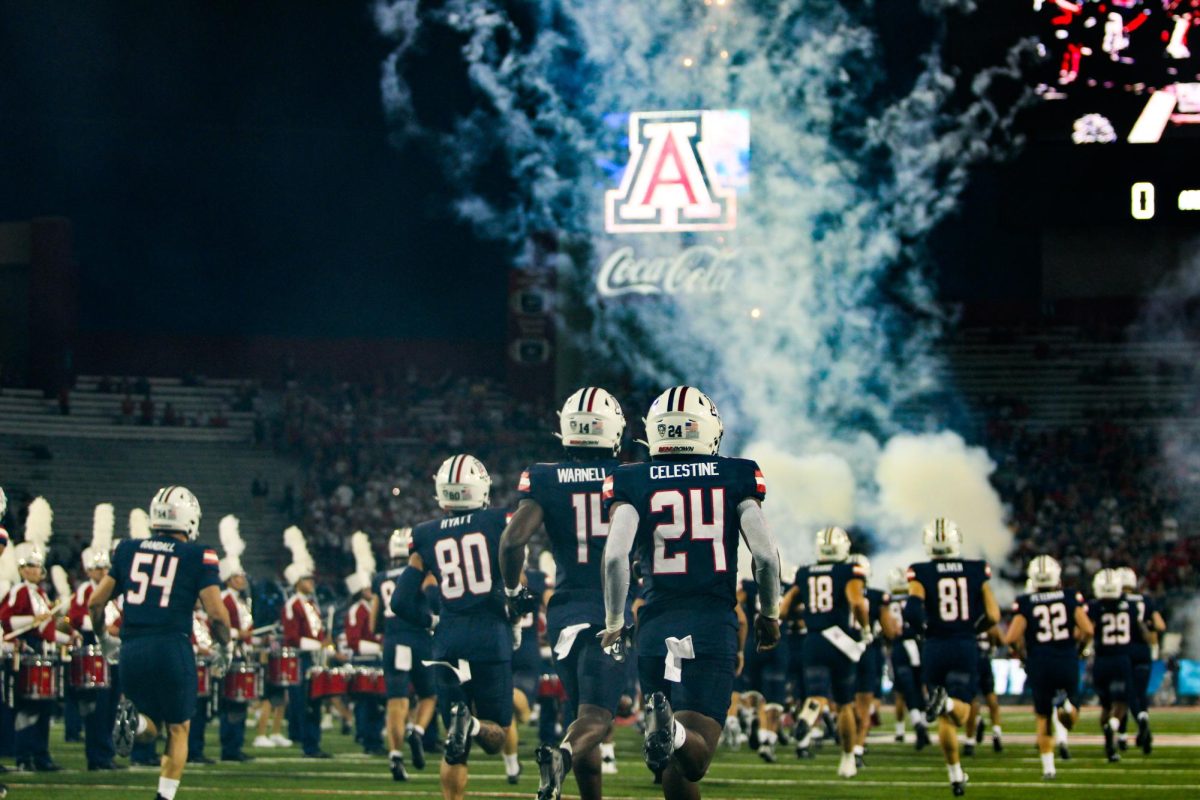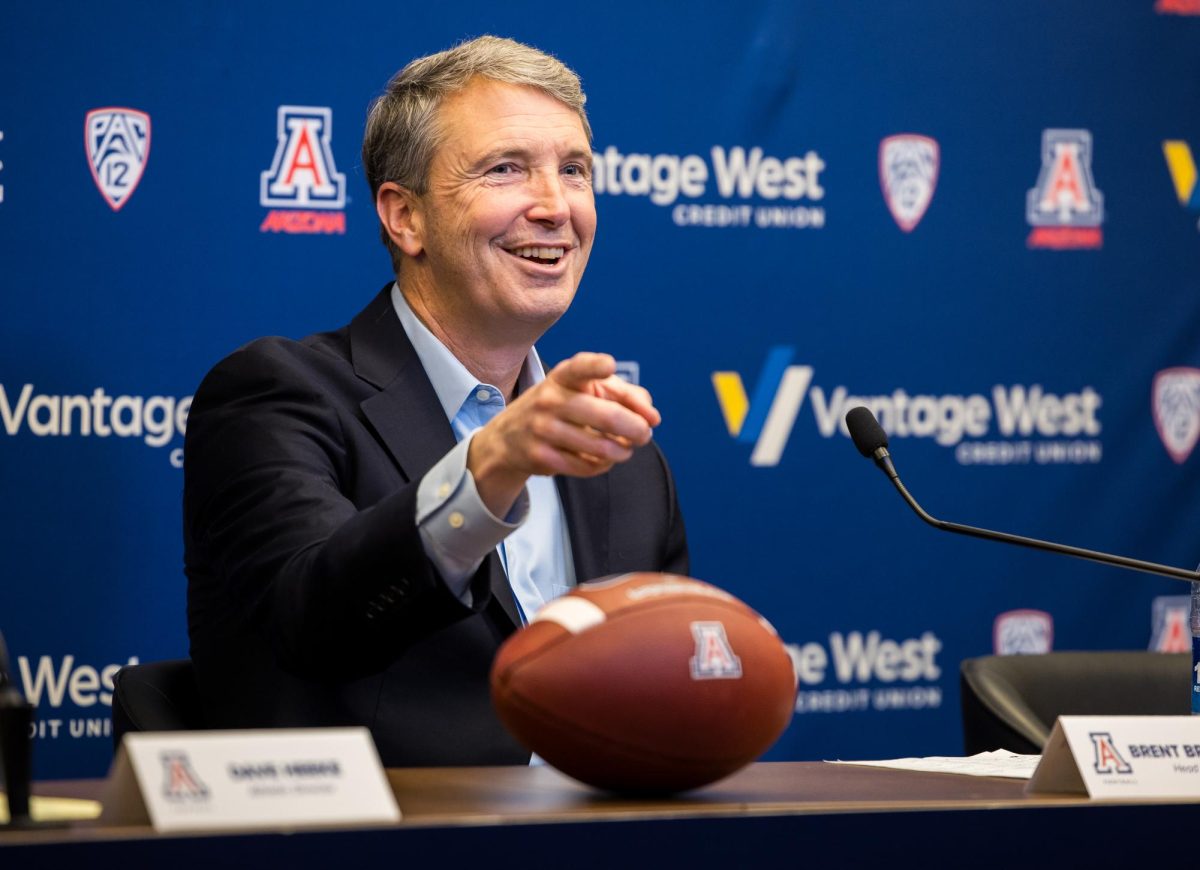Remember when scoring was a non-issue for Arizona? Remember when the Wildcats featured one of the most feared offenses in the Pacific 10 Conference?
A minimum of 30 points and 450 yards was the norm and head coach Mike Stoops would have never said “we need to score more points” after a game as he did last week after the UA’s loss to Stanford.
But those days are over.
The electric offensive attack that characterized the 2010 Wildcats has vanished.
The once-lethal offense that gave Arizona a puncher’s chance against top teams is on vacation, though the Wildcats will need it more than ever against offensive juggernaut Oregon at Arizona Stadium tomorrow night at 7:15.
“We’re going to have to score more than 10 or 14 points and we need our offense to get the ball in the end zone and make kicks against a team like this,” Stoops said.
But unless Arizona finds a running game and a kicking game and can score touchdowns inside the 20 against the Ducks, it’s not looking good.
Arizona’s offense is stagnant, one-dimensional and MIA in the red zone. Despite turning the ball over only once all season and averaging 364 passing yards per game, the Wildcats can’t score like they used to.
They’ve been held scoreless in five of their last eight quarters played, and as a result have been outscored by a combined 50 points. While the lack of points seems out of character, Arizona’s inability to score dates back to the end of last season.
Arizona was white-hot out of the gate in 2010, topping 40 points three times in its first seven games and averaging 32.6 points per game over its first eight games, seven of which were wins.
Then the wheels came off.
Arizona hasn’t beaten an FBS opponent since defeating UCLA on October 30, 2010, and its lack of offense has been a big reason why.
During that losing streak that spans almost 11 months, Arizona’s averaged an unimpressive 21.4 points per game. The Wildcats finished third in the Pac-10 in total yards last year and clearly know how to move the football, but the struggles lie inside the 20.
“We have a very good offense but it just comes down to getting in the end zone and finishing drives,” said center Kyle Quinn. “Inside the 20 is where games are won.”
With one of the worst red zone offenses in the conference, it’s no surprise Arizona holds the longest losing streak to Division I teams in the Pac-12.
The Wildcats finished second-to-last in the Pac-10 in red zone offense last season, scoring only 72 percent of the time. They tied for the most red-zone interceptions and fumbles in 2010, while missing three field goals inside the 20.
Those red zone woes have carried over to this season as the Wildcats once again rank second-to-last in red zone offense, converting only 70 percent of their chances.
While the missed field goals are a big part of that, Arizona needs touchdowns, especially against a high-powered offense like Oregon.
Those touchdowns come from an established running attack, which Arizona is still missing.
“When you get down in the end zone the field gets shorter so defensive backs don’t have to cover as much space, so having a consistent running game will force teams to honor the run a little bit more and that will set up the passes,” Quinn said.
That inability to run the ball and score touchdowns in enemy territory doomed the Wildcats in Eugene, Ore., last season.
Arizona came out firing and scored two quick touchdowns before the Ducks tied things up at 14 early in the second quarter. The Wildcats engineered a solid drive from their own 19-yard line to the Oregon 28, but after two consecutive incompletions, Nick Foles threw an interception at the Ducks’ 10-yard line — a missed opportunity.
On the last drive of the half, Arizona drove all the way from its own 8-yard line to Oregon’s 4-yard line, but a negative run by running back Nic Grigsby followed by a sack and a Foles incompletion forced the Wildcats to settle for a field goal — another missed opportunity.
Arizona should have scored 10 points from those two drives, but instead it ended up with only three. With Oregon up by eight late in the third, the Wildcats again drove down into Ducks territory, this time to the 24. But a three-and-out left Arizona with a field goal and from that point on, Oregon took control and went on to win 48-29.
The Wildcats can’t play that rerun this time around if they want to compete with Darron Thomas, LaMichael James and company. If they can couple Foles’ stellar play with a few red zone touchdowns, they can score with the Ducks.
Without that once-electric offense, Arizona stands no chance.




